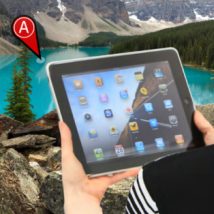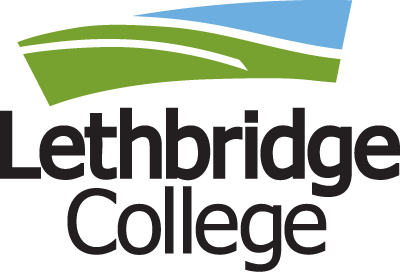 Lethbridge College is preparing for the next wave of learners who want their education available 24/7 and don’t particularly enjoy classrooms.
Lethbridge College is preparing for the next wave of learners who want their education available 24/7 and don’t particularly enjoy classrooms.
When Justin Shigehiro first cracks a textbook at Lethbridge College this month, it’s likely he and other recent high school grads will fully expect any traditional classroom instruction to be spiced by dashes of electronic razzle dazzle.
Like most of his generation, the Lethbridge Collegiate Institute grad is technologically savvy and eager to incorporate all the gadgets and wizardry into the process of learning.
Students, especially those who are as much at ease with Hewlett-Packard as they were with Fisher-Price, expect to have choices in how they access education. They anticipate Lethbridge College will provide flexible delivery options, such as blended and/or online courses, in addition to traditional classroom settings. They expect instructors to use technology in the classroom.
Fortunately for Shigehiro and his i-generation mates, Lethbridge College’s instructors are keeping up with the times. Gone are the days of blackboards and stand-alone lectures; most instructors now integrate some level of “e-learning” into their teaching repertoire.
Technology is now front and center; in some cases teachers and students never meet face to face. Online learning is the medium of choice for many pursuing post-secondary education, and instructors are responding in flexible ways. Delivery of instruction is flexible, accessible and personalized. So what is Lethbridge College doing to keep pace with the trend? Well, as it turns out, everything.
Lethbridge College has offered courses under the title of distributed learning for many years, but when the opportunity to review campus practices arose, the college discovered a learning medium of enormous depth with huge growth potential. Distributed learning is an umbrella term that encompasses all delivery methods at the college.
It isn’t just online, distance delivery or the use of innovative resources in the traditional classroom. Distributed learning is a multifaceted instructional model that includes any type of learning where some resources can be accessed independent of time and space. Distributed learning can be used in combination with face-to-face classroom and traditional distance-learning courses. It can also be an exclusive online environment.
In the fall of 2008 the Distributed Learning Operations Team embarked upon a journey to analyze the state of distributed learning on campus and to develop recommendations for improvement. After a year of extensive research, the college launched the development of “Roadmap to the Future: Lethbridge College’s Distributed Learning Strategy,” which will improve the model for each program area independently.
The goal is to enhance the student experience and increase engagement. The college will recruit new learners who seek flexible access to programs and courses. An important component is the provision of support to instructors while flexible learning models spread across campus.
Education is in a transition period, says Karen Harker, chair of the Educational Enhancement Team. Set foot in a few classrooms and you will see methods ranging from the traditional face-to-face lecture model with some online enhancements, to use of iPods and scenario-based learning or practicum opportunities. Many use a blended strategy.
“About halfway through the development of the Distributed Learning Strategy, we realized that it had become much bigger than the traditional online and print courses,” says Harker. “What we found is the lines are becoming less distinct between online learning and the classroom. More instructors in the classroom are using the online environment to enhance learning, and more DL instructors are adding online synchronous components that bring students together in ways similar to being in a classroom.”
The research conducted by the Distributed Learning Planning Team found that 58 per cent of distributed learning students registered in the fall 2009 semester were also taking courses on campus in a face-to-face format. The research also found that 65 per cent of instructors who answered the survey are interested in teaching online or in a blended format. In fact, most instructors are using a form of distributed learning without even realizing it.
“Most now use an online learning management system to support their activities in the classroom,” says Harker. “This might include posting presentations, quizzes and resources, and facilitating online discussions. Some are also using student response systems and SMART Board technology to engage students in their lectures and labs.”
“Lethbridge College strives to meet the needs of today’s student,” says Chris Goble, instructional technology manager.
“Most classrooms incorporate Internet resources, learning management systems, projectors, email and a host of other options that a decade ago would have been considered “technology.” Now, it can be hard convincing people who use these things that they are in fact using technology. Technology has evolved very quickly over the last few years,” says Goble.
The goal of the Distributed Learning Strategy is to increase the flexibility in courses and programs, and choices in delivery. Every course at Lethbridge College has different learning outcomes and objectives. The needs of the students in each program are different. Therefore, the Distributed Learning Strategy will in itself be flexible. It will be molded for each course and program in a manner that provides optimum enhancement.
The implementation will happen during the next three years and has started with discussions on the state of delivery in all programs on campus. A marketing plan will focus on identifying and recruiting learners who seek the convenience and opportunities of flexible delivery. Organizational structures and staffing models will be investigated and revised as necessary.
“I think one of the things that is new with Lethbridge College’s Distributed Learning Strategy is its focus on learning as a whole rather than just online or distance learning,” says Goble.
“As we plan for the future it is important to be aware that effective learning will always incorporate and adopt the most appropriate strategies. Adding blended components to all classes builds upon what is already happening and provides the chance to find what is most appropriate. It’s definitely not based on a one-size fits all plan for all classes.”
The Distributed Learning Strategy launched last April.
“This is a huge opportunity for instructors, programs, and Lethbridge College,” says Harker. “There is no way of knowing what the face of education will look like five or 10 years from now, but it is a very exciting time to be a student and an instructor.”
The evolution continues.


